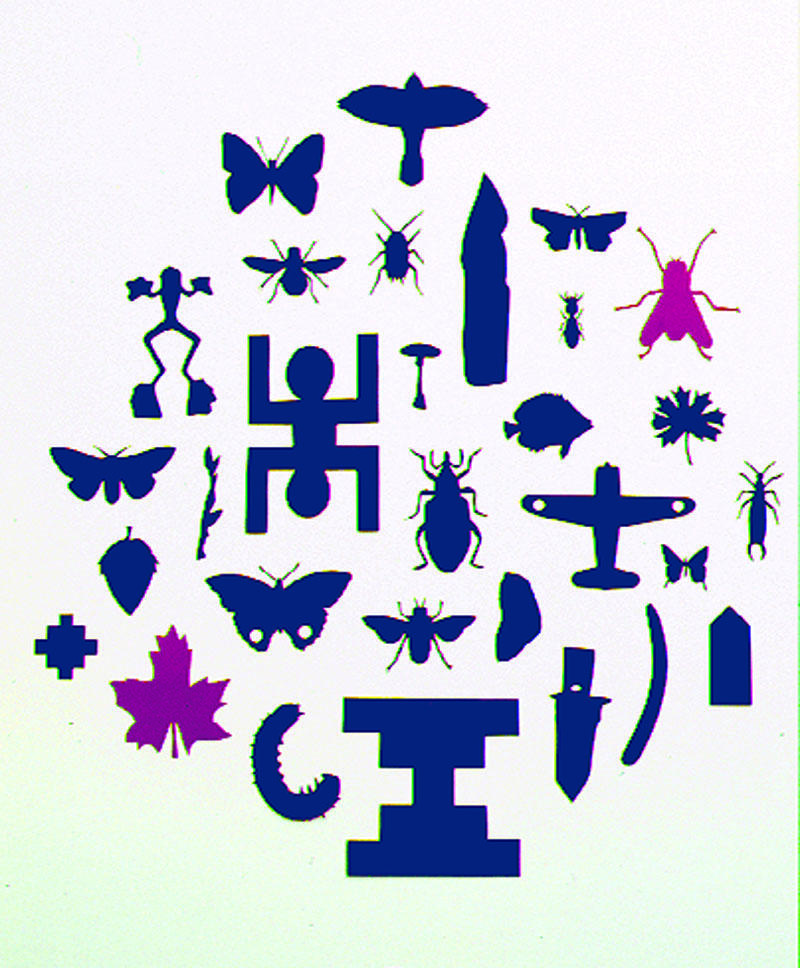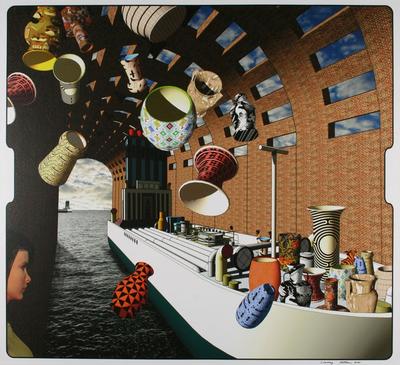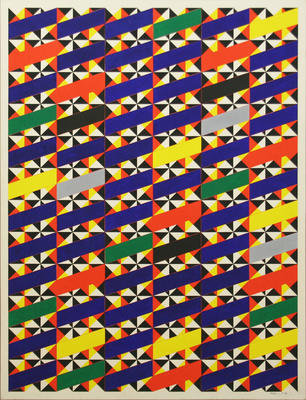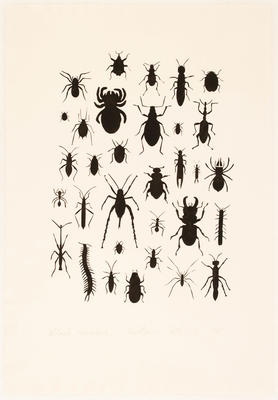Collection from a Japanese Garden 1937
-
Richard Killeen
b.1946

Title
Collection from a Japanese Garden 1937
Details
| Production Date | 1978 |
|---|---|
| Collection(s) | Collection Govett-Brewster Art Gallery, New Plymouth. Purchased from Monica Brewster Bequest in 1980. |
| Accession Number | 80/18 |
| Media | 30 cut-out painted aluminium shapes acrylic lacquer on aluminium |
| Measurements | Site specific: 3000 x 3000mm (approximately) |
About
Collection from a Japanese Garden 1937 is one of Richard Killeen’s first ‘cut-out’ works, the series for which he is best known. It comprises 30 objects cut from flat aluminium, painted with a high gloss lacquer and pinned individually to the wall. The title of the work refers to an insect specimen drawer in the Auckland Museum which provided Killeen with his inspiration — a fact reiterated by the manner in which the work is hung; impaled with pins, as insect specimens often are.
Killeen’s cut-outs call up a visual history of samples, specimens, copies and reproductions that refer to the history and practice of collecting. Killeen himself is a voracious collector of images, mining books, movies and museums and building up large image banks as fodder for his art. Collection from a Japanese Garden 1937 contains a selection of objects with no obvious narrative link apart from, perhaps, a focus on creatures and things with symmetrical wings or protrusions. The incongruous presence in this swarm of an A6M ‘Zero’ fighter plane, which was extensively deployed in the Pacific by the Japanese during World War II, foregrounds the politics latent in all collections.
The cut-outs are delivered to galleries or purchasers with Kileen’s instructions “hang in any order”. The composition of individual elements in Collection from a Japanese Garden 1937 is therefore decided by the person hanging the work, divesting the artist of some of his authorial responsibility. By abandoning the frame as an organising device, Killeen made his painting radically non-hierarchical. It can be assembled differently each time it is shown, creating new associations and dissonances between the elements. Killeen acknowledges that the potency and significance objects have is accorded to them by their spectator, and allows the viewer an active role in the interpretation of his work.


